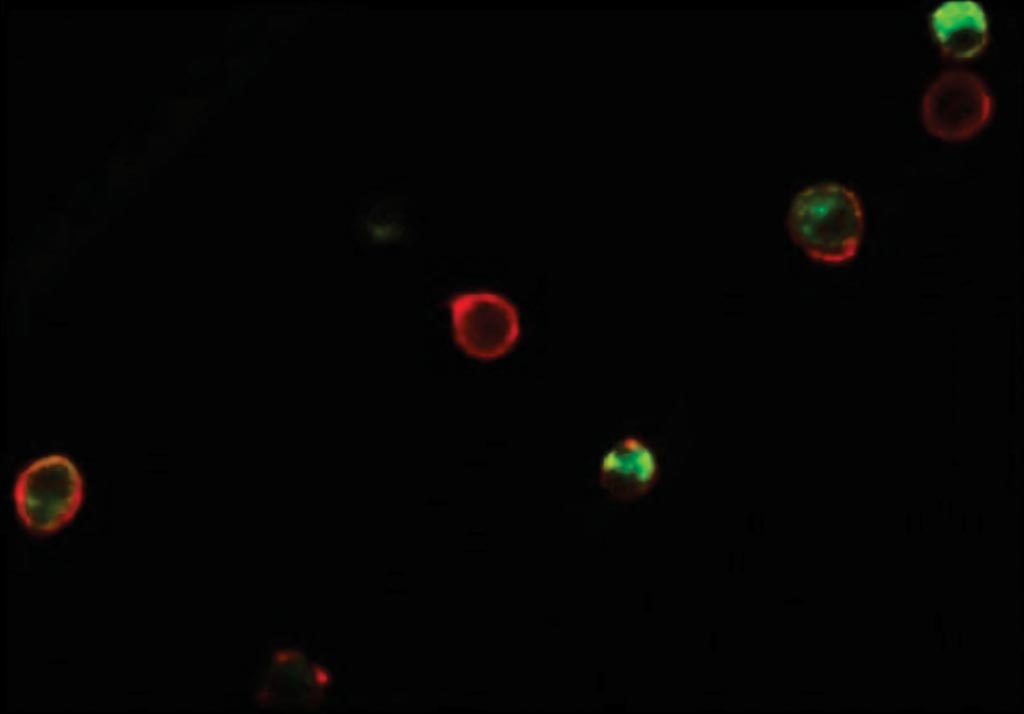Novel Technique Captures Plasma Cells from Myeloma Patients
By LabMedica International staff writers
Posted on 27 Apr 2017
Multiple myeloma is a cancer of the plasma cells, which are white blood cells produced in bone marrow that churn out antibodies to help fight infection. When plasma cells become cancerous, they produce abnormal proteins, and the cells can build up in bone marrow, ultimately seeping into the bloodstream.Posted on 27 Apr 2017
The disease is typically diagnosed through a bone marrow biopsy, in which a needle is inserted near a patient's hipbone to suck out a sample of bone marrow, which is a painful process for many patients. Clinicians can then isolate and analyze the plasma cells in the bone marrow sample to determine if they are cancerous.

Image: Fluorescence micrograph of captured plasma cells from a clinical sample. Red fluorescence denotes CD138, while green denotes κ light chain antibody (Photo courtesy of Massachusetts Institute of Technology).
Bioengineers at the Massachusetts Institute of Technology and their colleagues collected both peripheral blood and bone marrow (BM) in EDTA tubes from newly diagnosed myeloma patients. For studies with clinical blood samples from patients, capture, washing, and CD138 antibody labelling were performed. For studies involving BM, samples were passed through 100-μm nylon cell strainer to remove debris before being introduced to the capture chip. After the capture experiment, the same washing and labelling steps were followed.
The team used a microfluidic herringbone design to capture circulating plasma cells. They coated the channels of a microchip, about the size of a glass slide, with CD138, an antibody that is also expressed on the membranes of plasma cells. The team then streamed 1 mL samples of blood through the device. The herringbone grooves circulated the blood in the microfluidic channels, where the antibodies, acting as tiny Velcro pads, grabbed onto any passing plasma cells while letting the rest of the blood flow out of the device.
After counting the number of cells captured in each sample, they observed very low numbers of circulating plasma cells in healthy samples, about two to five cells/mL of blood, versus substantially higher counts in patients diagnosed with multiple myeloma, of about 45 to 184 cells/mL. The team also analyzed the captured plasma cells to determine the type of antibodies they produced. The scientists noted that patients who were in remission exhibited higher counts of circulating plasma cells than healthy donors. These same patients had shown normal ratios of kappa- and lambda-type antibodies in conventional blood tests.
Rohit Karnik, PhD, an associate professor and co-author of the study said, “We can capture and stain these cells in the device, which opens the possibility of studying whether there are new mutations in the cells. With cancers like multiple myeloma, even for patients in remission, cancer can recur. Detecting the level or mutation of plasma cells in blood might provide an early detection method for these patients.” The study was published on April 4, 2017, in the journal Scientific Reports.














